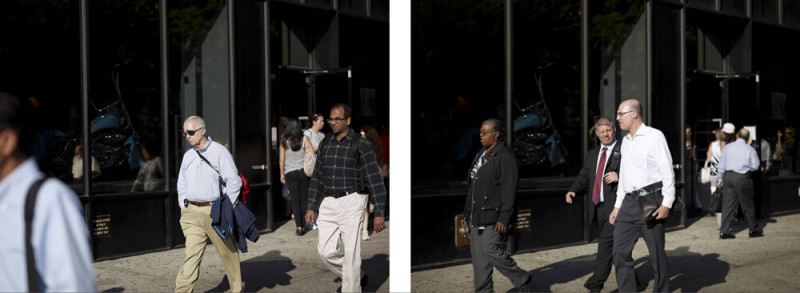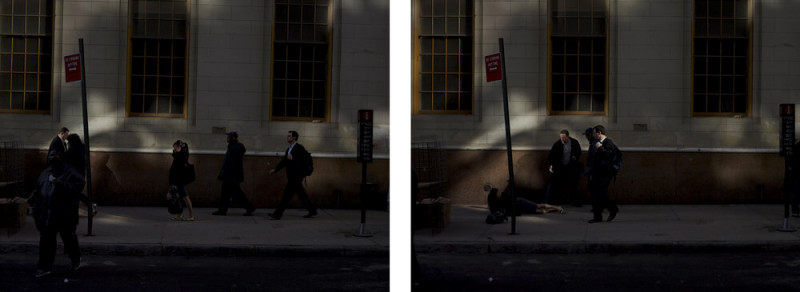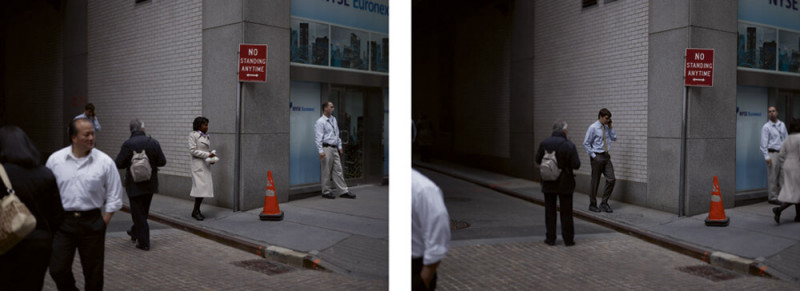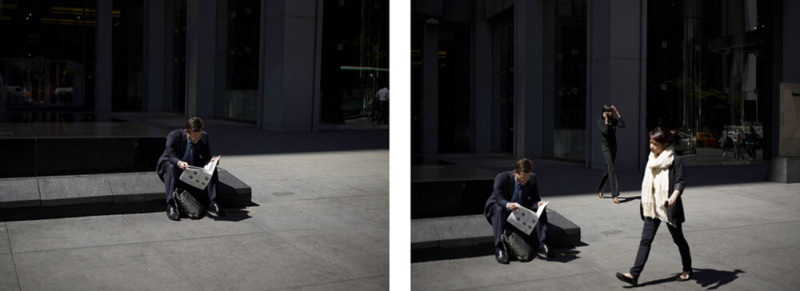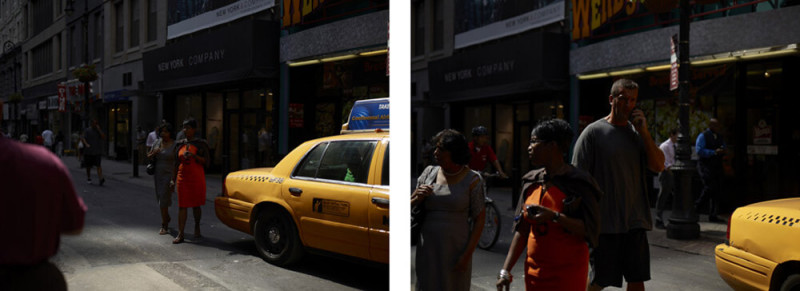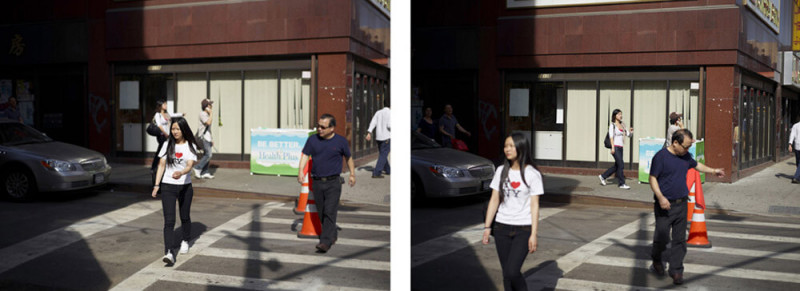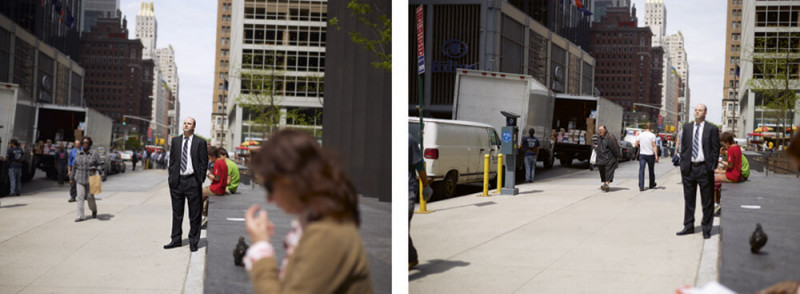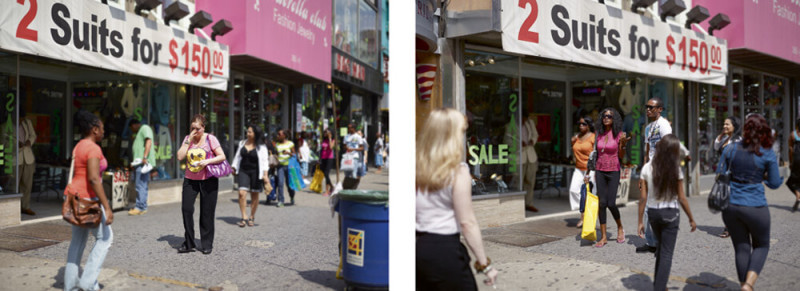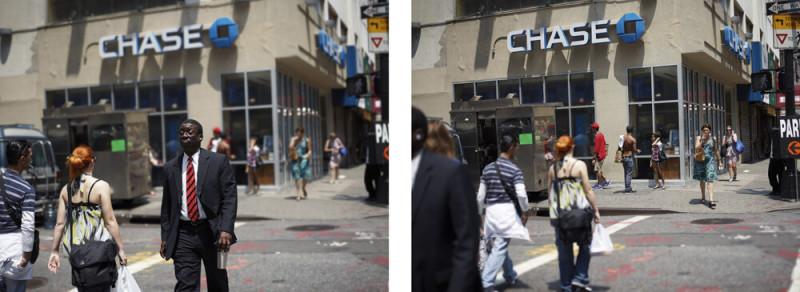Paul Graham
The Present
Special book review by Gerry Badger
How do you follow a shimmer of possibility, rightly voted the best photobook of the last twenty-five years at Paris Photo 2011. The truth is, you cannot, but Paul Graham is obliged to, or give up making books. It is unfair to bring the question up, but life is unfair. However, I shall try not to compare The Present with shimmer. I shall try to review the new book as if the last one never happened, although the odd reference might be necessary, particularly as they form part of Graham’s American book ‘trilogy.’
What have you got with The Present, a much anticipated volume? We have an exploration of certain questions that have occupied Paul Graham before, both photography’s relationship with time, that is, the ‘present’, and the nature of photographic narrative, or in this case, with non-narrative, as Graham would have it.
The premise behind The Present is nominally simple enough. The book consists of pairs, sometimes trios of pictures taken on the streets of New York, the images in each group taken more or less simultaneously, one a few seconds after another. None of the photographs could be described as ‘decisive moments’ in the street photography sense, where every element of the image is in perfect synchronisation, thereby creating a formal, if not an actual drama. Of course, his pictures are moments, and certainly decisive because the photographer has captured them, and more importantly selected them, but in imagistic terms Graham is aiming at a kind of divine ordinariness.
And in so doing, he is implicitly critiquing the decisive moment mode. Not for him the fake theatricality of the perfect street shot, which, as Lincoln Kirstein (back in 1938) believed “sensationalises movement, distorts gesture, and caricatures emotion.”
The Present is not about how traditional street photography freezes life and creates drama where in essence there is none, but is about the experience of the street, in particular how the process of seeing and comprehending things on the street can be represented more faithfully in photographs.
For example, take the book’s opening diptych. We are about to cross Delancy Street, in downtown Manhattan. We cannot see the other side of the street because a large truck delivering Heineken beer has paused, straddling the pedestrian crossing and obscuring the view. A moment later, the truck has cleared, but smaller vehicles have taken its place. The crossing is still physically blocked, but the view uptown to a distant Empire State Building has been opened up.
That is the picture’s substance – a view uptown is blocked and then cleared. Actually this is probably the most ‘dramatic’ image pair in the book. Most feature one or two figures who come into focus or disappear in the next picture, to be replaced by another – or not as the case may be. The groups are taken at the same location, but each time the viewpoint shifts subtly, as if we are walking along, and the various figures move in and out of our notice, just as they do as we encounter them in actuality.
But why not make a short movie sequence to recreate this kind of city experience? Asked this by Liz Jobey in The Financial Times, Graham replied that “a lot of film, I find, is neutered by the tyranny of narrative”, the necessity to have ‘a storyline.’
Here, Graham is perhaps being a little disingenuous. I know what he means, but if you put two photographs together, you inevitably create, or at least hint at a narrative. I have written above that we were about to cross Delancy Street in Graham’s diptych. We weren’t. There is nothing, beyond the hint of the pedestrian crossing, to suggest that. I have projected my own narrative on to the two pictures.
A photographer cannot stop that, nor should he. But what Paul Graham is exploring here, is a fragmentary, illusory, highly elliptical kind of narrative, almost a non-narrative. He always has. His photobooks, from New Europe onwards, could be said to be about the poetics of narrative rather than narrative itself. He certainly is no straightforward ‘story-teller.’
The overwhelming intent in The Present is to describe experience and its photographic description in a fresh way – undramatic, but true to how we comprehend the street. I am actually standing at a London bus-stop as I write this. People are walking past me. I look up briefly from my notebook and I catch a glimpse of them, or I look down again and they pass by in a blur of peripheral vision. Graham has caught that feeling. It might not be spectacular, or even pretty, but it is true.
However, I suspect that in a gallery, it is a different matter. In an interview posted on his website, Graham talked about the nature of photography versus photographic ‘art.’ And, whilst not denying the “big bang for your bucks” impact of the large single picture – the Gursky syndrome – he pleaded for the more modest art of Robert Adams, the sequence, and the photobook.
But Graham has done both – the book and the wall, so to speak. And this, I feel, is the real difference between shimmer and The Present. I have seen shimmer in both its manifestations, and while those sequences work on a wall, for me shimmer is first and foremost a bookwork. I did not see The Present exhibition, but my New York spies tell me that the prints were large and spectacular, confirming what I suspected from the book. With large printed diptychs, one would have a better chance to get ‘inside’ these pictures and ‘inhabit’ their spaces, thereby obtaining a fuller sense of the visual and psychological experiences they are conveying.
That conjuring up of lived experience is what the best photography aspires to do, to be about both how we exist in the world and about picture making. The second is as important as the first. When asked once why he took photographs, Garry Winogrand replied, “to get my rocks off.” Paul Graham tries to do this in every project he tackles, the ratio of the first impulse to the second differing each time.
Ok – to come back to being unfair. The Present might not be another shimmer of possibility, but it is still better than at least 95% of the photobooks published this year.♦
Paul Graham, born in 1956, was among the first photographers to unite contemporary colour photography with the documentary genre in the 1980’s. His early works, including A1 – The Great North Road, Beyond Caring, and Troubled Land were pivotal in reinvigorating and expanding this area of photographic practice, by both broadening it’s visual language, and questioning how such photography might operate.
In 2002 Graham completed a shimmer of possibility, which went on to be voted the best photobook of the last 25 years at Paris Photo 2011, and is the second instalment of Graham’s American trilogy which also includes American Night and The Present.
Graham’s work has been published, exhibited and collected internationally and he has received numerous awards including the Deutsche Börse Photography Prize in 2009 and the Hasselblad Foundation International Award in Photography in 2012. He is represented by Pace MacGill (USA), Anthony Reynolds Gallery (UK), Les Filles du Calvaire (France), Carlier | Gebauer (Germany) and La Fábrica Galería (Spain). Graham lives and works in New York City.
All images courtesy of MACK. © Paul Graham

